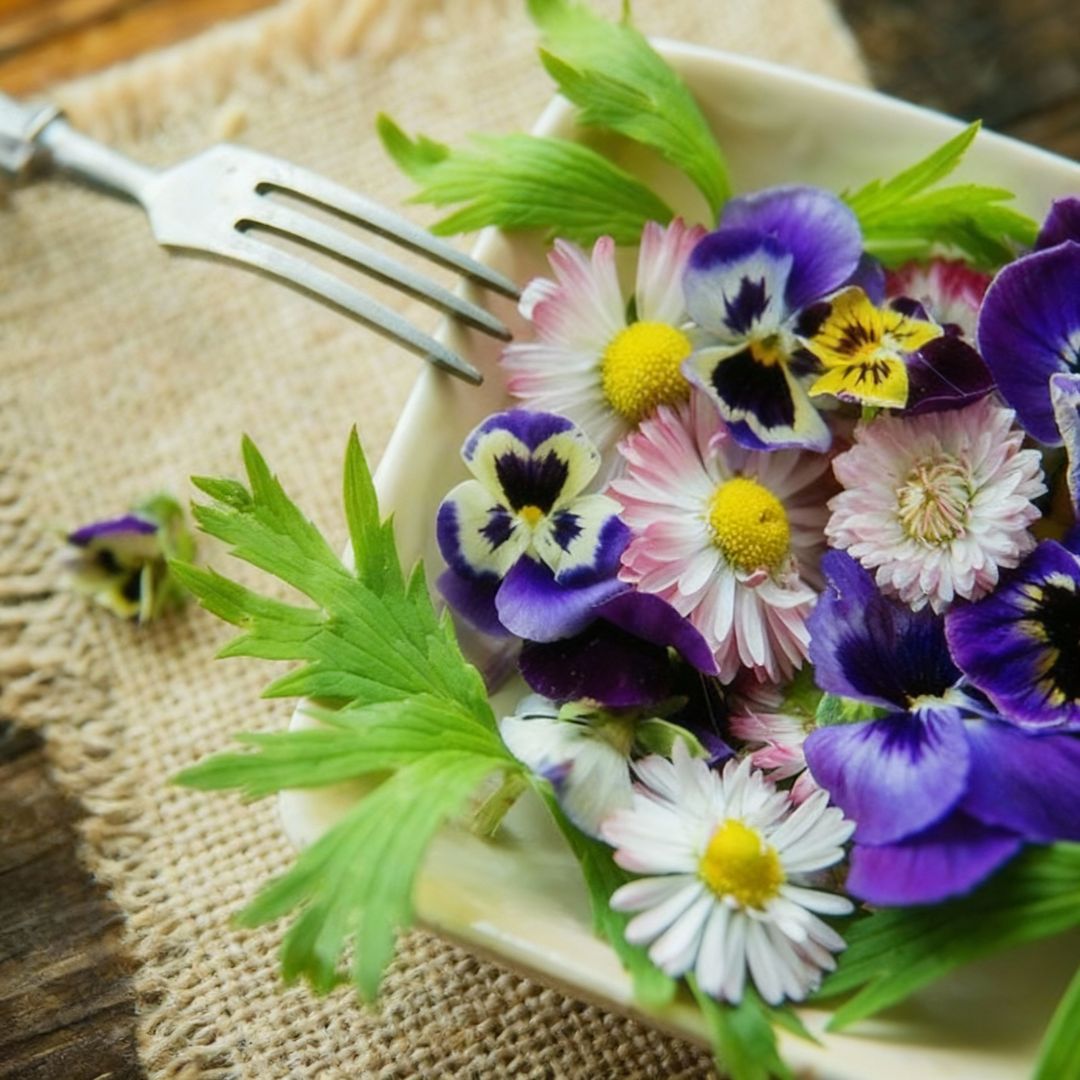Edible flowers are far more than a culinary myth. For centuries, cooks and bakers across the world have used blossoms to add color, fragrance, and delicate flavor to their dishes. From garden-fresh salads and desserts to teas and savory recipes, these blooms bring a touch of elegance to any meal. When handled safely and used creatively, edible flowers can turn an ordinary dish into a visual and sensory delight.
These blooms are grown and handled specifically for culinary use, ensuring they are free from harmful chemicals or pesticides. You’ll find them used as cake decorations, salad accents, infusions for tea, or even as vibrant additions to savory recipes. Always make sure you’re using food-grade flowers from trusted suppliers never pick flowers from unknown sources or decorative bouquets, as they may not be safe to eat.
Discover our flower bouquets today.
Why Use Edible Flowers in Cooking?
Cooking with flowers isn’t just about presentation; it’s about elevating the dining experience. Edible flowers introduce new layers of aroma, texture, and taste ranging from subtle sweetness to spicy or herbal notes. They’re also incredibly versatile, complementing both sweet and savory dishes. Beyond taste, their natural colors add visual flair, making your creations feel fresh, seasonal, and truly special.
1. Arugula Blossoms

Arugula blossoms are small, creamy-white flowers with a mild peppery taste, similar to the leaves but softer and more aromatic. They add both decoration and flavor to salads, pizzas, and cold pasta dishes. Pair them with lemon juice, olive oil, and shaved cheese for a simple yet sophisticated combination that captures the essence of a summer garden.
2. Violas (Pansies)

Violas, or pansies, are among the most beautiful edible flowers you can find. Available in rich shades of purple, blue, and yellow, they bring a gentle sweetness and a soft floral aroma to any dish. Violas look stunning on frosted cakes, in fruit salads, or floating on creamy soups. Their colors remain vivid even after plating, making them a favorite for pastry chefs and food stylists alike.
3. Calendula

Also known as “poor man’s saffron,” calendula is bright and sunny with yellow-orange petals that bring warmth to any plate. Fresh calendula adds a cheerful touch to salads, while dried petals can be used to infuse butter, flavor rice, or color bread naturally. The flower’s mild bitterness provides balance to rich or buttery dishes, making it a versatile kitchen favorite.
4. Chive Blossoms

Chive blossoms come in lovely light purple clusters and offer a delicate onion flavor that’s perfect for savory dishes. Sprinkle them over soups, omelets, or roasted vegetables to add both flavor and visual appeal. You can also steep the blossoms in oil or vinegar for a subtle infusion that lends a gourmet touch to dressings and sauces.
5. Nasturtiums

Nasturtiums are as bold in flavor as they are in color. Their red, orange, and yellow petals have a lively, peppery taste that pairs well with cheese, seafood, and fresh greens. Both the flowers and the round leaves are edible, making them a versatile choice for creative plating. Add them to sandwiches or cheese platters for a vibrant, zesty finish.
How to Use Edible Flowers?
To make the most of edible flowers, handle them gently. Rinse them lightly with cold water and pat them dry before use. Remove any bitter parts, such as stems or bases, if necessary. Always add flowers at the end of cooking or plating to preserve their shape and color. For flavor pairing, think of light and complementary ingredients floral notes pair beautifully with citrus, vanilla, honey, and herbs like mint or thyme.
Storage and Safety Tips
To enjoy edible flowers safely, always buy from reputable suppliers who sell food-grade blooms. Avoid flowers meant for decoration, as they may contain pesticides. If you’re trying a new flower for the first time, test a small piece to ensure you’re not allergic. Keep flowers cool and dry in an airtight container lined with tissue paper, and use them within a few days for the best texture and flavor.
Bringing Garden Beauty to the Table
Cooking with edible flowers is one of the simplest ways to bring beauty and freshness to your table. Whether you’re garnishing a cake, brightening a salad, or steeping blossoms into tea, these natural ingredients create an experience that’s both artistic and flavorful. With a little care in sourcing and preparation, edible flowers allow you to celebrate nature’s colors and aromas one bite at a time.






























